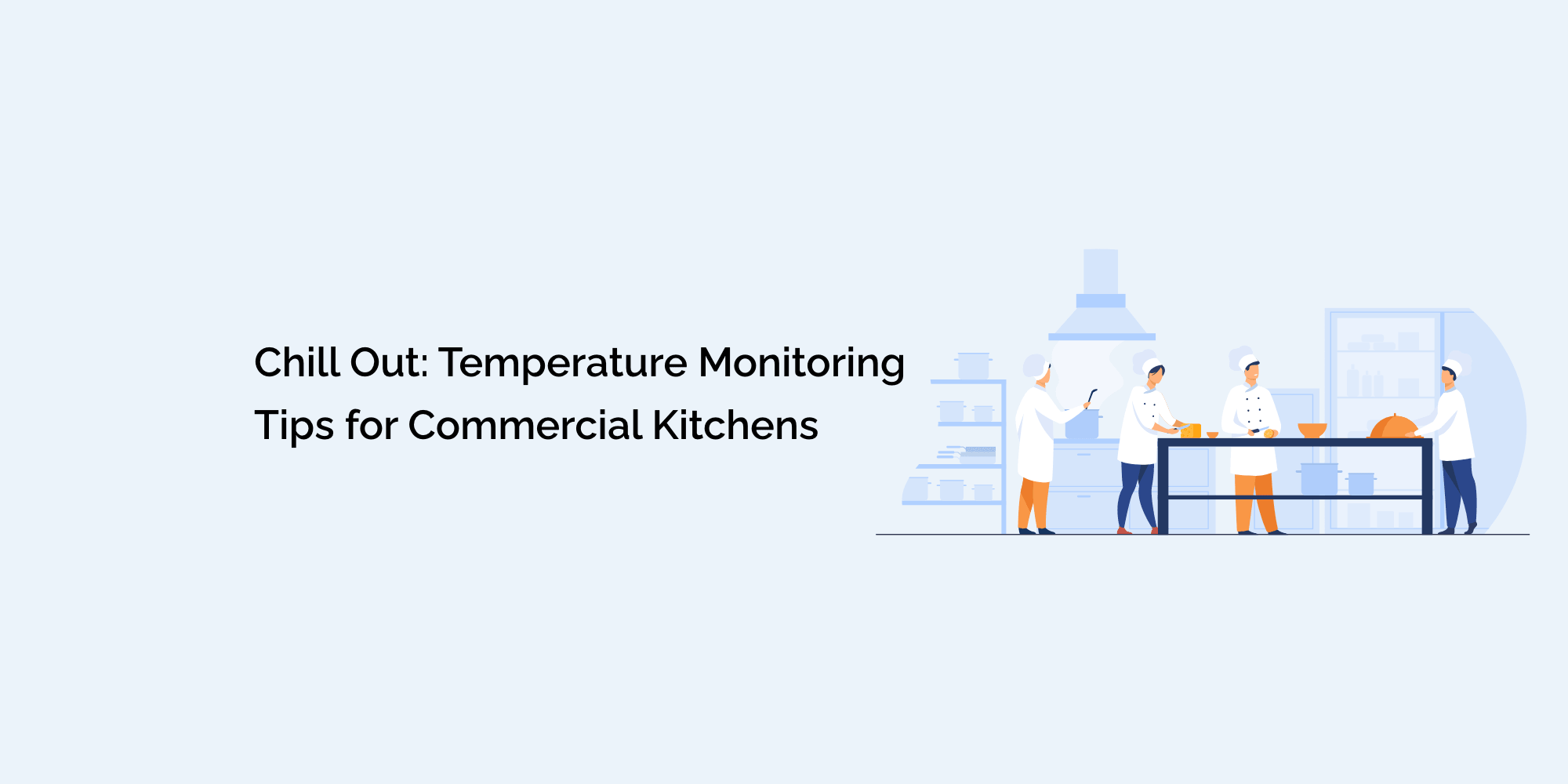Commercial kitchens are bustling hubs of activity, where precision and safety are paramount. Temperature monitoring is a critical aspect of kitchen operations, ensuring food safety, quality, and compliance with regulations.
In this blog, we'll explore essential temperature monitoring tips for commercial kitchens to help you maintain a safe and efficient culinary environment.
1. Invest in Reliable Thermometers
Accuracy is crucial in a commercial kitchen. Invest in high-quality, calibrated thermometers for various applications:
-
Food Thermometers: Use digital or dial food thermometers to check the internal temperature of foods, ensuring they are cooked to safe temperatures and retaining their quality.
-
Refrigerator and Freezer Thermometers: Keep thermometers inside your refrigerators and freezers to ensure they maintain the correct temperatures (below 40°F or 4°C for refrigerators and 0°F or -18°C for freezers).
-
Oven Thermometers: Place oven thermometers inside your ovens to verify that they heat to the desired temperatures.
2. Create Temperature Logs
Establish a robust temperature logging system to track temperatures consistently. This includes:
-
Monitoring Records: Keep records of temperature readings at various critical points, such as food storage units, refrigerators, freezers, and hot-holding areas.
-
Timestamps: Ensure temperature readings are taken at regular intervals and timestamped for reference.
-
Staff Training: Train your kitchen staff to use and complete temperature logs accurately. Regularly review and audit these logs for compliance.
3. Implement HACCP Principles
Hazard Analysis and Critical Control Points (HACCP) is a systematic approach to food safety. Implement HACCP principles in your kitchen by identifying critical control points (CCPs) where temperature control is essential. Develop standard operating procedures (SOPs) for these CCPs and regularly monitor and document temperature checks.
4. Use Wireless Temperature Monitoring Systems
Modern technology has introduced wireless temperature monitoring systems that offer real-time data and alerts. These systems can be especially beneficial for commercial kitchens, as they provide:
-
Remote Monitoring: Access temperature data remotely via smartphones or web interfaces, allowing you to keep an eye on your kitchen's temperature even when you're not on-site.
-
Alerts: Receive instant alerts via email or mobile notifications if temperatures deviate from safe ranges, enabling quick action to prevent food spoilage.
-
Data Logging: Many systems include data logging capabilities, providing a historical record of temperature trends for analysis and compliance reporting.
5. Train Your Staff
Proper training is key to successful temperature monitoring:
-
Temperature Checks: Train your staff to conduct regular temperature checks on foods, equipment, and storage units as part of their routine tasks.
-
Calibration: Ensure that thermometers are calibrated regularly and that staff know how to calibrate them.
-
Emergency Response: Train your team to respond effectively to temperature-related emergencies, such as refrigeration failures or overheated equipment.
6. Maintain Equipment
Regularly maintain and service your kitchen equipment, especially refrigeration units, ovens, and stovetops. Malfunctioning equipment can lead to temperature fluctuations that compromise food safety and quality.
7. Develop a Temperature-Driven Cleaning Schedule
Temperature monitoring can also guide your cleaning practices:
-
Hot Water Sanitation: Use hot water at a specific temperature for dishwashing and sanitizing surfaces and equipment.
-
Steam Cleaning: Implement steam cleaning procedures at the right temperature to eliminate bacteria and contaminants.
Conclusion
Temperature monitoring is the backbone of food safety and quality in commercial kitchens. By investing in reliable thermometers, implementing temperature logs, using wireless monitoring systems, and maintaining proper training, you can ensure that your kitchen operations run smoothly while meeting the highest standards of safety and compliance.
So, in your bustling commercial kitchen, remember to "chill out" and let temperature monitoring be your guide to culinary success.








